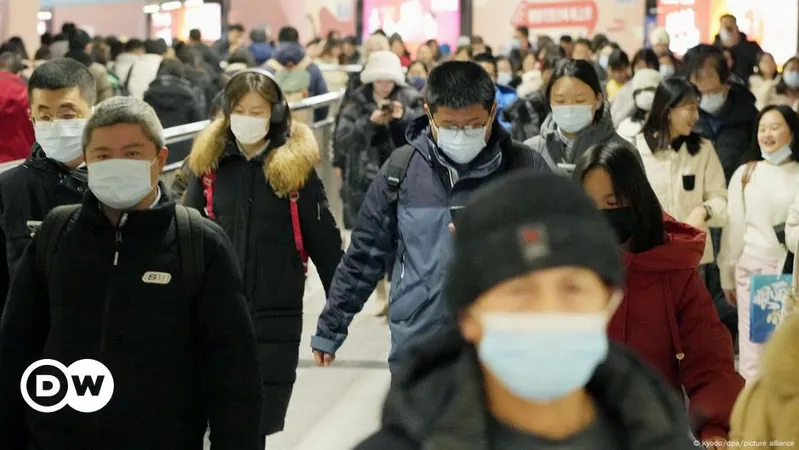
What You Need to Know About the HMPV Outbreak in China
2025-01-06
Author: Wai
What You Need to Know About the HMPV Outbreak in China
Recent reports of an outbreak of human metapneumovirus (HMPV) in various regions of China have sparked global concern and interest. This virus, first identified by Dutch researchers in 2001, has likely been circulating among humans for centuries, making it a familiar but often misunderstood respiratory infection.
The increasing number of pneumonia cases has prompted China's National Administration of Disease Control and Prevention to implement new reporting protocols. Health officials have cautioned the public about relying solely on antiviral medications, as several respiratory viruses are prevalent during the colder months.
The Current HMPV Situation
The latest outbreak appears to be hitting young people particularly hard in northern China. Alongside HMPV, cases of rhinoviruses, which are well-known contributors to the common cold, have also surged. Meanwhile, in neighboring India, two cases of HMPV were confirmed in Karnataka. The Indian Health Ministry also noted that HMPV is endemic globally, with no significant increase in severe respiratory infections reported.
Epidemiologists assert that the rise in HMPV cases is part of the regular seasonal patterns associated with winter. "The heightened prevalence among children aligns with what we've observed for this virus: it's a common cause of respiratory illness in young ones," explains Jacqueline Stephens, an epidemiologist from Flinders University in Australia.
Understanding HMPV: Similarities to RSV
HMPV is from the same viral family as respiratory syncytial virus (RSV), which similarly causes short-term infections and tends to peak during colder months. Until HMPV was identified in 2001, many cases were misdiagnosed as RSV due to overlapping symptoms.
Albert Osterhaus, a leading virologist involved in HMPV's initial discovery, states, "We found that all the children over roughly five years old had antibodies against the virus," indicating its prolonged existence in humans. Unlike the rapidly mutating influenza virus, HMPV is considered relatively stable, resulting in instances of reinfection over time as immunity fades.
Symptoms and Transmission
HMPV primarily impacts the upper and lower respiratory tract. Symptoms mirror those of RSV and can include cough, fever, and nasal congestion—making diagnosis challenging, especially in mild cases. Severe infections could lead to pneumonia or bronchitis. The virus is contagious and spreads through respiratory droplets when an infected person coughs or sneezes, as well as through contact with contaminated surfaces.
While any demographic can contract HMPV, young children and the elderly are particularly vulnerable to severe illness.
Treatment and Future Prospects
Currently, there is no specific treatment or vaccine for HMPV. Standard preventive measures include practicing good hygiene, avoiding close contact with infected individuals, and wearing masks when necessary. Encouragingly, research is underway to develop an effective vaccine, drawing inspiration from advances made in RSV vaccine development. Osterhaus is optimistic about the vaccine's prospects, predicting its availability "in the coming years."
Understanding HMPV and taking precautionary measures can help communities address this growing health concern. As the situation unfolds, keeping informed will be crucial to preventing further outbreaks and ensuring public safety.



 Brasil (PT)
Brasil (PT)
 Canada (EN)
Canada (EN)
 Chile (ES)
Chile (ES)
 Česko (CS)
Česko (CS)
 대한민국 (KO)
대한민국 (KO)
 España (ES)
España (ES)
 France (FR)
France (FR)
 Hong Kong (EN)
Hong Kong (EN)
 Italia (IT)
Italia (IT)
 日本 (JA)
日本 (JA)
 Magyarország (HU)
Magyarország (HU)
 Norge (NO)
Norge (NO)
 Polska (PL)
Polska (PL)
 Schweiz (DE)
Schweiz (DE)
 Singapore (EN)
Singapore (EN)
 Sverige (SV)
Sverige (SV)
 Suomi (FI)
Suomi (FI)
 Türkiye (TR)
Türkiye (TR)
 الإمارات العربية المتحدة (AR)
الإمارات العربية المتحدة (AR)